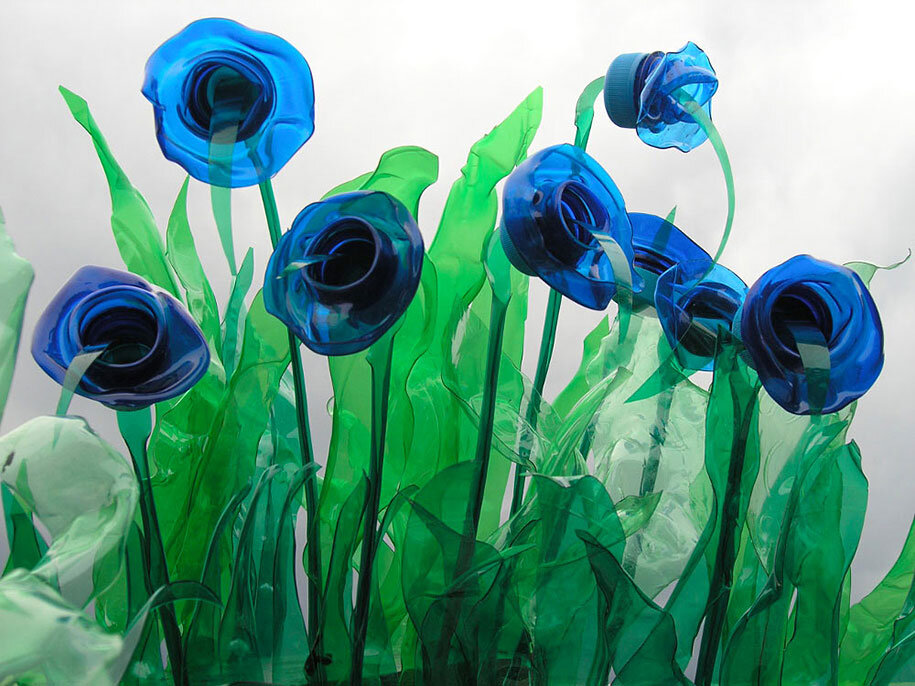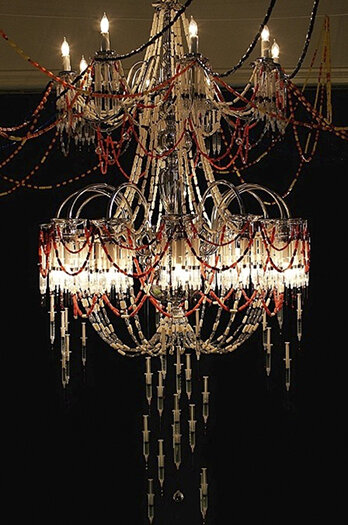
Creative Cures for Hospital Waste
Healthcare comprises 17.8% of our GDP and as an industry, hospitals are one of the top generators of waste adding up to over 5.2 million tons annually. Recycling is tricky due to the huge assortment of its waste products: everything from infectious waste to unused and expired pills to hazardous lab chemicals to paper and cardboard (which alone can account for half of a hospital’s waste). Dealing with the diversity of it all is quite challenging given the exacting and stringent requirements that are required to render each waste product safe for reuse. It has been said that 20-30% of hospital waste is generated from the Operating Room (OR) alone and ironically, this is precisely the place where there is an abundance of a particular material with great potential.
This material is known as “blue wrap,” a nonwoven polypropylene plastic (#5) with multiple uses including maintaining the sterility of surgical instruments prior to use in the operating room. It accounts for 19 percent of all operating room waste, according to the U.S. Environmental Protection Agency which adds up to roughly 255 pounds annually. The good news is that the discarded single-use blue wrap can be collected in its clean sterile state ready for adaptive reuse. Reduction of a fraction of it (say just 1 million pounds) throughout the country equates to removing 250 cars off the road.
Veronica Marella, a surgical technician has found a way to turn sheets used in sterilization trays into waterproof mats for the homeless.
Veronica Marella, a surgical technician has found a way to turn sheets used in sterilization trays into waterproof mats for the homeless.
Today more than 400 U.S. hospitals have initiatives that are diverting over 4 million pounds of blue wrap from landfills each year. The programs are expected to extend the life cycle of single-use wraps, allowing healthcare facilities to recycle more than 30 million pounds of blue wrap waste annually.
Blue wrap can be collected in a perfectly clean state and used directly for tote bags, wallets, neckties and whatever your imagination suggests. For example, the 4-by-4-foot sheets are durable, waterproof and retain heat which inspired Veronica Marrella from Torrance, CA, to repurpose them as blankets for the homeless.
Beyond recycling, blue wrap is collected by processors who turn it into resin pellets that can be used in making a host of other products. Blue wrap upcycling stands out as a model example of the circular economy that can divert plastic from our toxic landfills and waterways.
See what medical surplus inspired in these committed artists and designers below. We pray that their infectious creativity will go viral.
Denise Domergue
Singh Intrachooto Pouf (ottoman), 2014 Bags for sterilized surgical tools
Singh is the design principal at Thailand’s leading eco-design production house, Osisu.“I was also excited when I worked with medical staff at various hospitals because most people fear hospital waste. They don’t know that nearly half of hospital waste is super clean and of high quality. We are able to reclaim and produce new products, which gives all of us great strength to go where no man has gone before (sounds like Star Trek movie).”
Nancy Judd Bella the Bride, 2016, wedding dress made from recovered Tyvek
Beacon Converters, Inc. commissioned this dress designed by artist and environmental educator Nancy Judd. The pure white gown is pieced and sewn out of discarded Tyvek®, a clean, flexible, white plastic, sterilizable material, widely used in healthcare packaging. The flowers on the dress were made primarily by people attending medical industry conferences across the US in 2016.
Waste is More The Big Wav(st)e, over 500 sterile water jugs upcycled from hospitalsThe French creative lab, Waste is More, has built ‘the Big Wav(st)e’ Pavilion as part of the ‘Festival des Architectures Vives’ in Montpellier, France. In an effort to raise awareness of plastic pollution, the installation uses large, 5-liter capacity recycled hospital water jugs as construction bricks to form the arch-like structure. The team has constructed 14 such self-supporting arches assembled together in a wave pattern to highlight the possible uses of the currently un-recycled plastic.
Andy Diaz Hope & Laurel Roth Blood, Money, and Tears, 2006, custom chromed chandelier, hypodermic needles, gel capsules, swarovski crystals One of a series of chromed, and reassembled chandeliers “examining the utopian ideals promised by the pharmasutical industry and recreational drug culture. Dripping with hundreds of medical syringes and garlanded with strings of multicolored pills and Swarovski crystal, the chandelier highlights the pursuit of a beautiful ideal, which may involve unintended consequences”
Rodney Allen Trice
Crutch Table crutches, steel cable & glass 27" x 54"
“Listen to an object long enough & it will tell you what it wants to be next..” Trice believes that there is some purpose to every object and nothing is truly trash. Sturdy crutches often serve their purpose for a period of time and are seldom repurposed to enjoy a second life.
Banner Image: Artist: Veronika Richterová
Photo by Michal Cihlář







